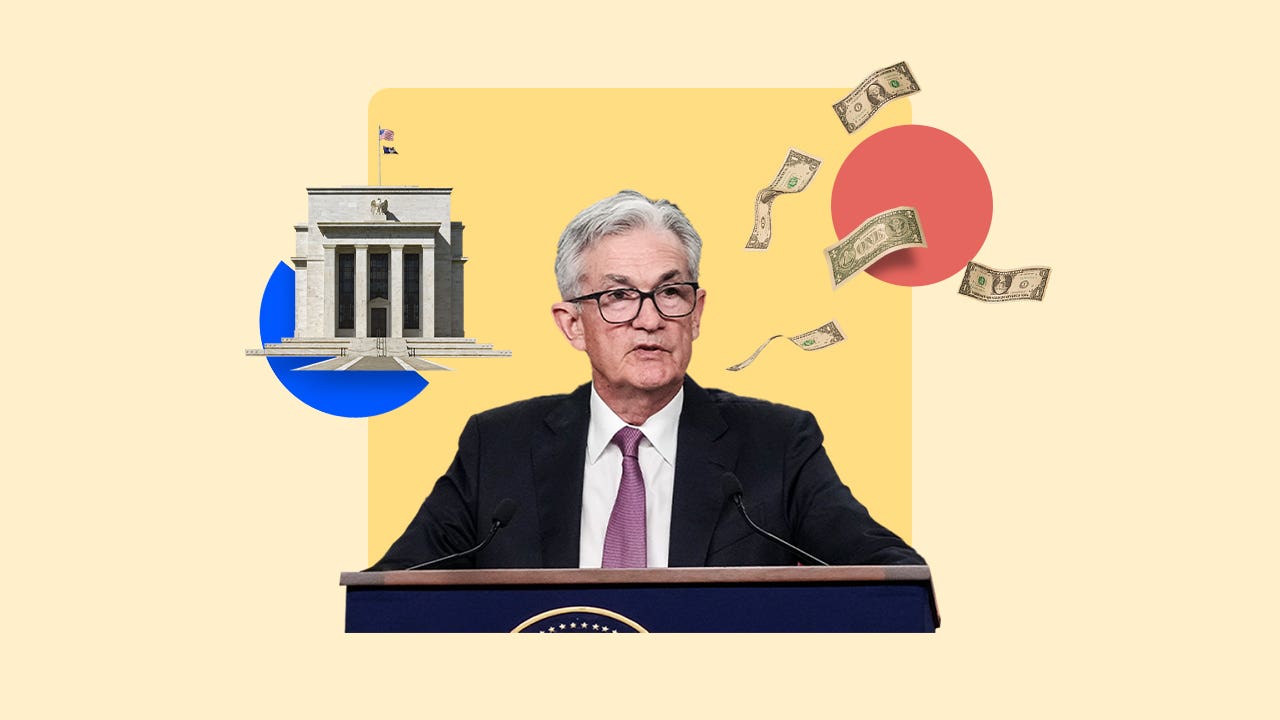Survey: Economists split on whether Fed will cut rates in first or second half of 2024

The Bankrate promise
At Bankrate we strive to help you make smarter financial decisions. While we adhere to strict , this post may contain references to products from our partners. Here's an explanation for .
The Federal Reserve made a shocking pivot at its final meeting of 2023. Not only did officials signal that they’re likely done raising interest rates in their most dramatic inflation fight in four decades — they’re also preparing to cut borrowing costs in the year ahead.
The nation’s top economists are catching the message. The majority of experts (93 percent) surveyed for Bankrate’s latest Economic Indicator poll say the Fed will likely follow through with those plans and cut borrowing costs in 2024. Yet, even before U.S. central bankers showed widespread agreement to cut rates this year, a similar large majority of economists in Bankrate’s prior-quarter poll (94 percent) were already expecting them.
Economists, however, are split over whether the Fed will cut interest rates by the first half of 2024 (47 percent) or the second half (47 percent). The remaining near 6 percent in Bankrate’s economists’ survey are expecting that the Fed will end up staying on hold until 2025.
But they aren’t as divided on the magnitude of rate cuts. Every expert noted that the Fed will gradually trim interest rates as price pressures settle back in at officials’ 2 percent target. In other words, the rock-bottom borrowing costs of the pandemic-era aren’t around the corner.
For borrowers, those rate moves would take only a subtle edge off of the highest financing costs in over a decade. Savings yields, meanwhile, may have already peaked, but it’s likely still going to be a rewarding time to have cash stashed away, especially as inflation continues slowing.
Peak interest rates appear to be behind us, but savers and borrowers should remain prudent when shopping around for the best rates. We’re mindful that Americans broadly live paycheck to paycheck, meaning many will be wise to prioritize saving both for emergencies and for retirement.— Mark Hamrick | Bankrate senior economic analyst
Key insights on the economy from Bankrate’s fourth-quarter Economic Indicator poll
Economists say the Fed will cut rates — but when and by how much?
Just two policymakers on the Federal Open Market Committee (FOMC) expect to keep borrowing costs steady in the year ahead, officials’ latest projections from December show. One official sees one cut; five officials see two cuts. Six officials see three cuts, which is also the median rate estimate for the year ahead. Four officials, meanwhile, see four cuts. One official sees six.
But if the annual forecast from Bankrate chief financial analyst Greg McBride, CFA, comes to fruition, the more conservative of the Fed’s rate-cut estimates may be what prevails. McBride is projecting only two cuts in the year ahead, expecting slowing inflation to lose some momentum.
Still, inflation has been surprising to the downside, a welcome development as the U.S. economy continues dodging widespread recession forecasts.
So-called core prices that exclude the more volatile food and energy categories rose just 3.2 percent from a year ago in November, data from the Department of Commerce shows. Economists say the Fed may be able to start trimming rates once that gauge falls below 3 percent. Yelena Maleyev, senior economist at KPMG, sees core prices hitting that level by May 2024.
Meanwhile, core prices increased just 1.9 percent from a year ago on a six-month annualized basis, undershooting the Fed’s inflation target for the first time since 2020, a Bankrate analysis of inflation data shows.
“The Fed’s candid assessment of the progress on inflation, along with the admission that policy is now sufficiently restrictive, puts the Fed in a much better position entering 2024,” says Gregory Daco, chief economist at EY. “Rather than denying the obvious, Fed officials can now acknowledge that policy recalibration will be a feature of the 2024 outlook and focus on delivering a consistent message around the timing of rate cuts.”
Cutting rates also serves another purpose: minimizing the damage to the economy. Higher rates are a blunt tool, slowing inflation only by weighing on demand across the board. Just because interest rates have materially slowed the U.S. economy yet doesn’t mean they won’t. The longer rates stay at this historically high level, the more pressure it may put on the financial system.
Even though their focus has been one-sided since inflation’s surge, Fed officials have a dual-mandate: stable prices and maximum employment. Now that price increases seem to be approaching the Fed’s target, officials may be able to let up on the brakes – compensating for the decline in inflation by lowering interest rates at a similar pace.
But one reason the Fed won’t cut rates dramatically is because it doesn’t want to risk giving the economy too much stimulus back. Fed officials are haunted by nightmares from the 1970s and ’80s, when stop-and-go rate policies led to more stubborn inflation.
“I still don’t believe inflation will moderate fast enough to allow for an early March or May initial cut,” says Scott Anderson, chief economist at BMO Capital Markets.
Here’s what the nation’s top economists are saying about the Fed
“Though inflation will not return to the 2 percent baseline next year, a slowing economy and lower inflation will prompt the Fed to begin lowering rates. Even slight decreases in the federal funds rate will signal the Fed stands ready to cut more quickly if needed, which should help stimulate investment and spending.”
— Robert FrickCorporate Economist at Navy Federal Credit Union
“It looks increasingly likely that the Fed will be able to engineer a soft landing as they have pivoted to discussing the outlook for possible rate cuts in 2024. The Fed will likely make the first cut in June 2024, but the pace of cuts will be quite low — leaving ‘higher for longer’ intact.”
— Dante DeAntonioSenior Director at Moody's Analytics
“2023 started with markets expecting rate cuts before the end of the year and 2024 is starting the same way. Unless the pace of progress toward the inflation goal picks up, any cut in 2024 would seem premature.”
— Sean SnaithDirector of the Institute for Economic Forecasting at the University of Central Florida’s College of Business
-
The Fourth-Quarter 2023 Bankrate Economic Indicator Survey of economists was conducted Dec. 11-18. Survey requests were emailed to economists nationwide, and responses were submitted voluntarily online. Responding were: Mike Fratantoni, chief economist, Mortgage Bankers Association; Odeta Kushi, deputy chief economist, First American Financial Corporation; Nayantara Hensel, Ph.D., chief economist, Seaborne Defense; Yelena Maleyev, senior economist, KPMG US; John E. Silvia, founder, Dynamic Economic Strategy; Gregory Daco, chief economist, EY; Scott Anderson, chief U.S. economist, BMO; Dante DeAntonio, senior director, Moody’s Analytics; Lawrence Yun, chief economist, National Association of Realtors; Bernard Markstein, president and chief economist, Markstein Advisors; Robert Frick, corporate economist, Navy Federal Credit Union; Bill Dunkelberg, chief economist, NFIB; Joseph Mayans, director of U.S. economics, Experian; Sean Snaith, director, Institute for Economic Forecasting, College of Business at the University of Central Florida; and Mike Englund, chief economist, Action Economics.


